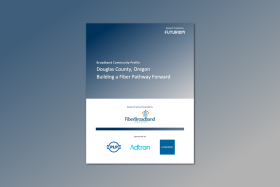Calix Earnings Get a Broadband Boost

Calix Inc. (NYSE: CALX) beat Wall Street expectations in its latest earnings report, validating its short-term goal to “land and expand” among broadband service providers (BSPs) that have stepped in where incumbent telcos failed to deliver.
For the second quarter of 2022, the vendor of access network hardware and software reported overall revenue of $202 million, up 20% year-over-year and 9% sequentially. Gross margin was 50.1%. Earnings per share came in at 22 cents on net income of $14.8 million, which was down 43% due to higher income taxes and lower gross margin resulting from higher component and logistics costs.
“Supply chain continues to be just a war every day,” said chairman and CEO Carl Russo on a conference call with analysts. Still, the company is optimistic in its guidance. For the third quarter, Calix expects revenue between $211 million and $217 million, EPS between 18 cents and 24 cents, and gross margin between 49% and 51%.
What Calix Sees in the Market
Throughout the earnings call, Calix stressed that its short-term goal is to serve BSPs, a sector that is expanding with the broadband boom in the U.S. resulting in part from Congress passing the fiber-friendly Broadband Bill and approving the associated funding. This has resulted in a slew of smaller broadband companies, often backed by utility cooperatives, extending fiber service to homes and businesses in municipalities and regions that were formerly passed over by incumbent service providers.
“The enormous secular opportunity we are capitalizing on grows every day,” said Russo. “And the Calix team is committed to executing with excellence to help our customers simplify their businesses, excite their subscribers, and grew their value.”
Eventually, Russo thinks BSPs will be the dominant market force, competing on service and support rather than by merely relying on the delivery of bandwidth. “There will only be broadband service providers in the future,” said Russo during a Jefferies software conference in June. “And those broadband service providers will provide you all the services to your devices over a single converged network.”
How This Plays Out In Product Terms
Calix has tailored its marketing to fit its vision of the BSP trend. Instead of selling its products on an “a la carte” basis, Calix has shifted to a strategy that combines its products in suites of software and hardware for fiber-based access networks. The company also focuses on working with an ecosystem of BSP partners, which resell Calix products. Calix then takes a share of revenues from those partners.
Calix isn’t alone in addressing the BSP market. Nokia (NYSE: NOK), Adtran (Nasdaq: ADTN), and others see the BSP opportunity as well. Each of these companies has been active in promoting high-speed passive optical network (PON) equipment that splits lightwaves into individual streams supporting broadband signals to homes and businesses. These competitors are joined by companies such as Ciena (NYSE: CIEN) that see a chance to capitalize on the PON trend from the network central office or headend perspective.
Bottom line? Calix and its competitors are part of a trend that could reshape the market for broadband services in the U.S. And judging by the latest Calix numbers, that trend is gaining momentum.
Calix shares finished the day trading up $6.06 to $50.38, a gain of nearly 14%.


















